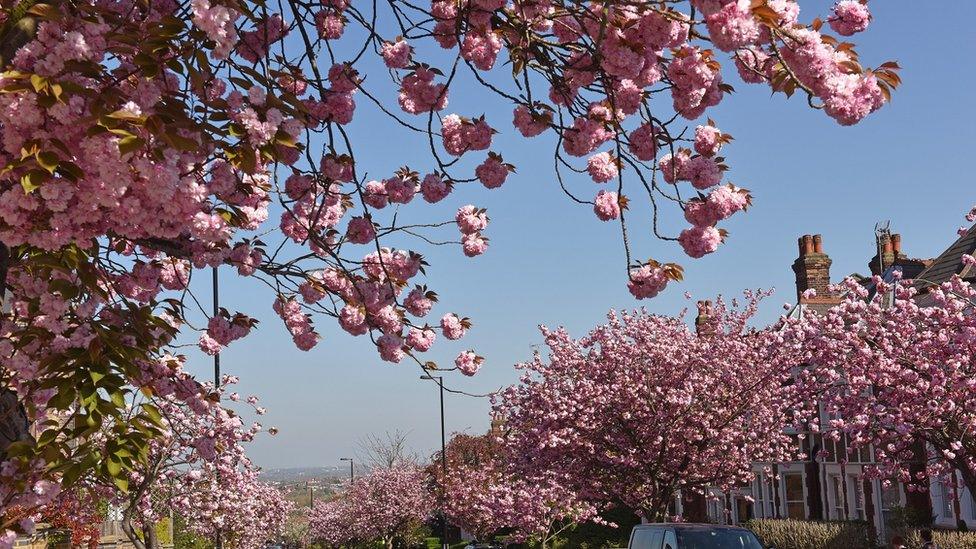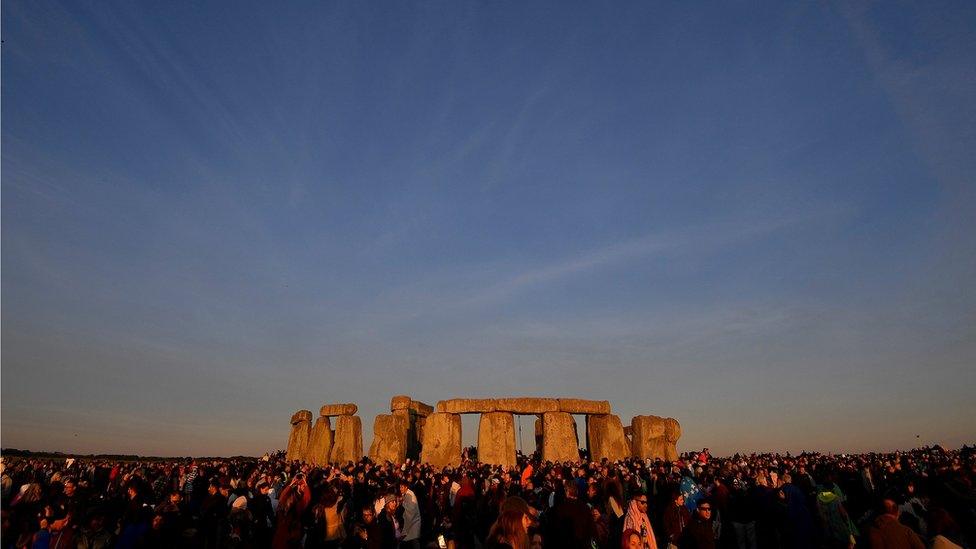When do the seasons change?
- Published

The start of September marks the beginning of autumn in the meteorological calendar
When do seasons actually start and end?
The answer to that often creates debate in the office, between friends, family and, more often, on social media.
The answer is simple. It depends on which calendar you follow - ancient Celtic or Irish, meteorological, or astronomical.
The ancient Celtic calendar, also known as the Gaelic or Irish calendar, dates back centuries and is still followed by many in Ireland today.
Seasons in the Celtic calendar are grouped into three full months:
Autumn - August, September, October
Winter - November, December, January
Spring - February, March, April
Summer - May, June, July
"This goes back millennia" said Críostoír Mac Cárthaigh from the National Folklore Collection at University College Dublin.
"I think it's very much tied to the agricultural year. For instance, Halloween was the traditional end of harvest - when all the crops would be harvested and the animals were brought in," he said.
"So, the 1 November marks the beginning of winter, or the dark period of the year.
"It's all pre-Christian but it's interesting that some Christian festivals overlay the calendar. Both St Patrick's Day and Christmas Day fall in the middle of seasons."

For many people cherry blossoms in full bloom signal the start of spring
The Irish months also point to the old calendar.
"Meán Fómhair - or September - can be translated as the middle of harvest, or the middle of autumn. Márta - or March - can also be translated as the middle of spring," said Mr Mac Cárthaigh.
"In Belfast, for example, you would have had a parade on 1 May marking the start of the dairy period of the year. It would then mark the start of summer."
The meteorological calendar is also grouped into three full months but the seasons begin a month later:
Autumn - September, October, November
Winter - December, January, February
Spring - March, April, May
Summer - June, July August
Meteorological centres around the world collect weather and climate records, and this method makes it a more consistent way of calculating long-term averages and annual seasonal climate summaries.
"It probably makes sense only because it conveniently allows us to put three months into seasons for statistical purposes," said John Wylie from the Met Office.
"There's logic to it. Summer is the three warmest months, winter is the coldest.
"I think it's convenient.
"It's been long established and the public can empathise with why we do it and are happy that summer is June, July, and August."

Thousands gather at Stonehenge every year to welcome the summer solstice
However, the astronomical calendar seasons are defined by two solstices and two equinoxes.
These are determined by Earth's tilt and the sun's position over the equator.
"The astronomical calendar is the same all over the world - there's no arguing with it," said Terry Mosely from the Irish Astronomical Society.
"The astronomical calendar has remained the same all over the planet because it follows the alignment of the sun and the tilt of the earth.
"That's what gives us our seasons.
"Other calendars in the world though have changed. I'll stick with the astronomical seasons."
So, there you have it.
If you're a meteorologist, autumn begins on the 1st September.
If you're an astronomer, it's 23rd September this year.
And, if you follow the Irish calendar, you only have two months to wait until the start of winter.